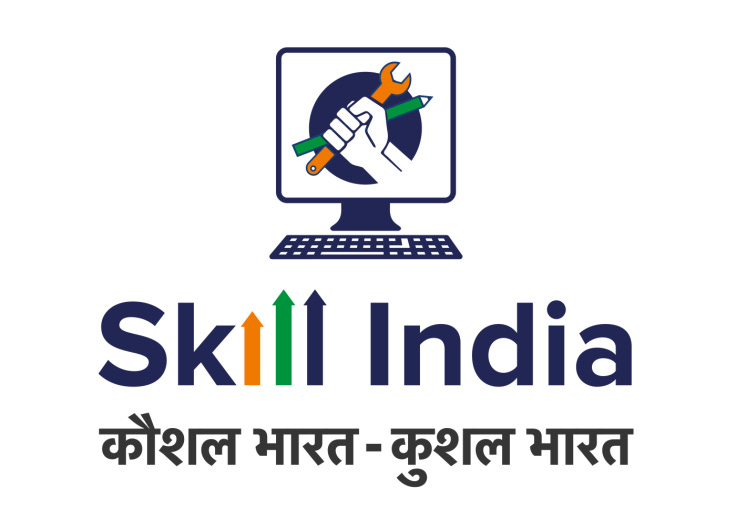Vishwakarma Scheme: Nine Crucial Factors Require Focus
A gamechanger skill development scheme for the youth that would not only employ but also empower them, and facilitate entrepreneurship. However, 9 factors need continued monitoring.
Overview of the Vishwakarma Scheme
Launched by Prime Minister Narendra Modi on the auspicious occasion of Vishwakarma Jayanti on September 17, 2023, the Vishwakarma Scheme is a comprehensive initiative aimed at empowering over 40 lakh traditional artisans and craftsmen in India. The scheme has been allocated a budget of Rs 13,000 crore and is slated for implementation over a five-year period.
Formal Recognition: Legitimising Artisanship
One of the cornerstone features of the scheme is formal recognition. Beneficiaries will be endowed with a PM Vishwakarma certificate and ID card, acknowledging their valuable role as traditional artisans. This recognition is expected to lend legitimacy to their crafts and open new avenues for them.
Skill Upgradation: Investing in Human Capital
A significant part of the scheme focuses on skill upgradation. The government plans to provide basic and advanced training programmes tailored to improve the artisans' skills and knowledge base. This skill enhancement is likely to raise the quality of their crafts, making them more competitive in both local and international markets.
Material Support: Empowering Through Tools
The scheme is also attentive to the artisans' material needs. Beneficiaries are entitled to a toolkit incentive of Rs 15,000, facilitating the acquisition of essential tools and equipment that are vital for their crafts. This provision is expected to directly impact the quality and efficiency of their work.
Financial Inclusion: Easing the Capital Crunch
Financial inclusion and credit support are other key aspects. Under the scheme, artisans can avail themselves of collateral-free credit of up to Rs 3 lakh at a concessional interest rate of 5%. This financial cushion is intended to encourage them to invest in better materials and, possibly, technological upgrades.
Digital Transformation: Expanding Market Reach
Additionally, the government aims to modernise the way these artisans conduct business. Support for adopting digital transactions will be provided, along with guidance for effective marketing strategies. This inclusion of digital literacy is designed to help them tap into wider markets, thereby increasing their revenue streams.
Multifaceted Objectives: Beyond Economic Gains
Objectively, the Vishwakarma Scheme serves multiple goals. It seeks to preserve and promote the rich, traditional arts and crafts of India. It aims to boost the productivity and skills of artisans, thereby raising their income levels and improving their livelihoods. Lastly, by formalising this sector and integrating it more effectively into the economic machinery, it is expected to make a tangible contribution to the growth of the Indian economy.
Overview of Previous Initiatives
The launch of the Vishwakarma scheme is certainly not the first initiative aimed at skill development and the betterment of artisans in India. The Modi Government, since it assumed office in 2014, has rolled out various schemes with similar objectives. To start with the most recent ones, we have the Prime Minister’s Kaushal Vikas Yojana (PMKVY 4.0) and PMKVY-Rozgar Mela which were designed to impart industry-specific training and facilitate employment. Before that, we had the National Apprenticeship Promotion Scheme (NAPS) and the Skill Loan Scheme, which also sought to build skills and offer financial incentives. Older schemes like National Urban Livelihoods Mission (NULM), DAY-NRLM, and TRYSEM targeted either the urban or rural poor with their focus on self-employment and capacity building. These initiatives have laid the groundwork for the Government's skill development mission.
Discrepancies in Impact: The Reality of Previous Schemes
However, despite the good intentions and significant resources allocated, the success of these previous initiatives has been, at best, modest. While they did bring some positive outcomes such as training millions and placing a percentage of them in jobs, they have not resulted in a tectonic shift in the livelihoods of the beneficiaries. There's a gap between the scale of the challenges faced, particularly in terms of unemployment, and the impact these schemes have had.
The Need for Policy Reformation: Addressing Pressing Challenges
Given the high levels of unemployment and inflation, coupled with a scarcity of formal Government and corporate sector jobs for unskilled or semi-skilled youth, there's a pressing need for effective policy intervention. In this backdrop, skill development emerges as one of the most viable solutions. Providing the youth with appropriate skills not only prepares them for the formal job market but also opens avenues for self-employment and entrepreneurial ventures. In a country as diverse and populous as India, this dual focus is not just preferable but necessary.
Parallels and Differences: The Vishwakarma Scheme's Positioning
While the Vishwakarma Scheme is a welcome step with a hefty budget and institutional backing, its core objectives and methods don't appear to be fundamentally different from its predecessors. It follows the well-trodden path of skill upgradation, financial support, and formal recognition, similar to what schemes like PMKVY and NAPS aimed to achieve.
The Need for Monitoring: Learning from Past Initiatives
Therefore, it is crucial to look beyond the budget allocation and target numbers outlined in the Vishwakarma Scheme. The Government must identify key and critical factors that could potentially impact its success, especially in light of the lukewarm performance of previous initiatives. It is essential that these factors be meticulously monitored and adjusted as needed to ensure that this ambitious scheme, launched with much fanfare by PM Modi, does not follow in the footsteps of its less successful avatars
Crucial Factors Requiring Monitoring
Let’s now address various crucial aspects of the scheme, from skill relevance to job placement and employment laws
1. Relevance to the Job Market
The new scheme must prioritise skills that are directly relevant to the job market. To ensure maximum employability, it's crucial to transcend traditional vocational or ITI-based education. A curriculum closely aligned with industry needs will position beneficiaries competitively in the workforce.
2. Skill Over Certificate
The focus should be on the practical acquisition of usable skills rather than merely obtaining a certification. A skills-first approach ensures that candidates are genuinely job-ready. Moving beyond paper qualifications will increase the scheme's real-world impact.
3. Fair and Transparent Selection
Beneficiary selection should be conducted in a transparent and meritocratic manner. Using objective criteria ensures that the most competent candidates are chosen. Transparency in the process fosters public trust and enhances the scheme's credibility.
4. Quality of Training Institutions
Training should be imparted not only in government institutions but also in private institutions that meet stringent HR and infrastructure criteria. This diversification enhances the quality and reach of the programme. By involving reputable private institutions, the scheme can benefit from diverse teaching methodologies and resources.
5. Financial Accessibility
Despite government assurances and RBI circulars, rural banks are often reluctant to grant loans without collateral. A district-level credit committee, overseen by the Deputy Commissioner or District Magistrate, should monitor loan disbursement. Proper oversight at the local level will help mitigate this hesitancy, enabling more candidates to participate.
6. Beneficiary Tracking
Active tracking of beneficiaries and their employment or entrepreneurship record is vital. Regular updates on online portals enable accurate assessment of the scheme's impact. This real-time tracking will also facilitate timely outreach when new opportunities arise, either within India or abroad.
7. Exploring International Opportunities
Both the Central and State governments should collaborate to identify foreign opportunities offering attractive remuneration. This would widen the scope of employment for skilled individuals. Taking this international outlook can also protect youth from exploitation by dishonest travel agents.
8. Review of Labour Laws
Current labour laws, such as the Industrial Disputes Act, discourage formal sector employment and need re-evaluation. Modernising legislation, including the Contract Labour Abolition Act, will create a more adaptable employment landscape. A more flexible framework will make employers more inclined to hire skilled candidates.
9. Strengthening Apprenticeship Programmes
Finally, the Apprenticeship Act must be fully implemented to provide equitable opportunities for both employers and apprentices. This should work in tandem with modern internship programmes designed for more academically qualified candidates. By offering a range of options, the scheme can cater to varying levels of educational attainment.

Summing up and the Way Forward
To sum up, Prime Minister Modi's initiative is an ambitious step with the potential to revolutionise not just employment, but also empowerment and entrepreneurship among India's youth. However, the promise of the scheme will only be realised if we concentrate on the critical elements outlined above: relevance of skills to the job market, institutional integrity, financial accessibility, beneficiary tracking, legal framework adaptability, and international opportunity exploration.
Opportunity for Unprecedented Success
By adopting this comprehensive approach to monitoring and focusing on these crucial aspects, we can move beyond commendable intentions to tangible impact. Such an initiative, subject to vigilant scrutiny and adaptive governance, has the potential to set both national and global benchmarks for skilling, empowering, and employing the younger generation. Furthermore, a nuanced, regionally adapted strategy, backed by a robust system of checks and balances involving multiple stakeholders, could significantly contribute to the scheme's success. This will ensure not just optimal, but maximum benefits accrue to the Indian youth, fulfilling the scheme's objectives not just in letter but in spirit.
By harmonising these aspects, we have a real opportunity to make this initiative a paradigm-changing programme, thus fulfilling its lofty aims of skilling, empowering, and employing the future of India.





